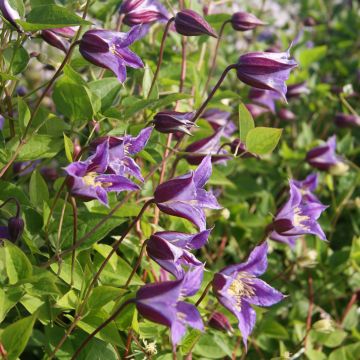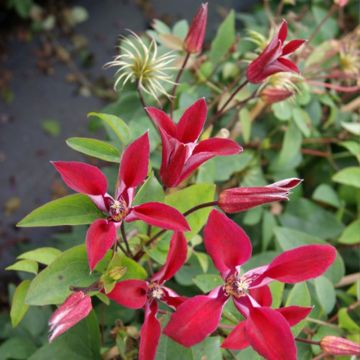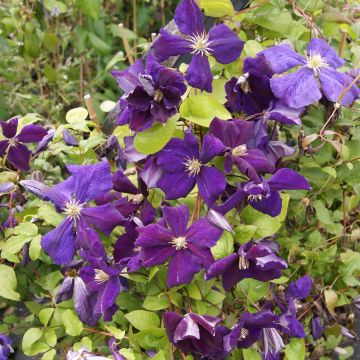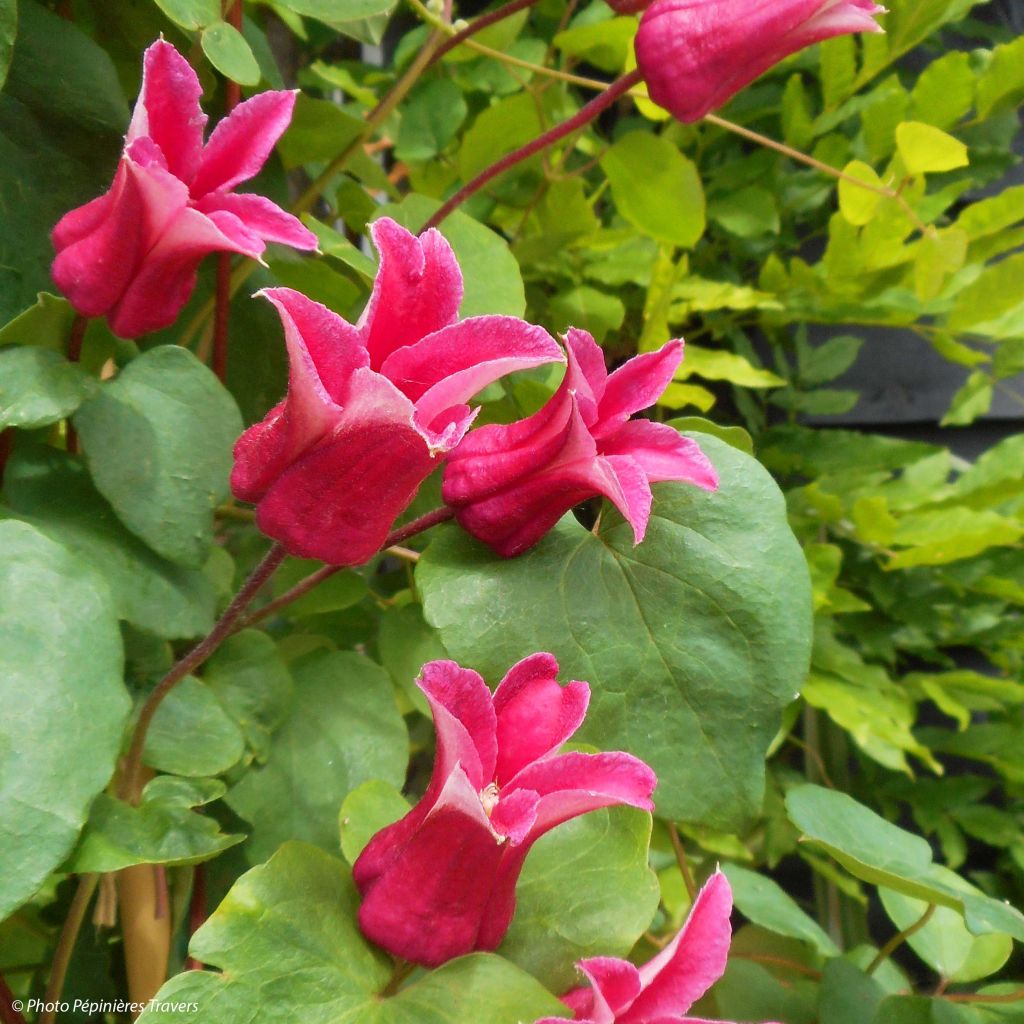

Clematis texensis Queen Maxima - Scarlet Leather Flower
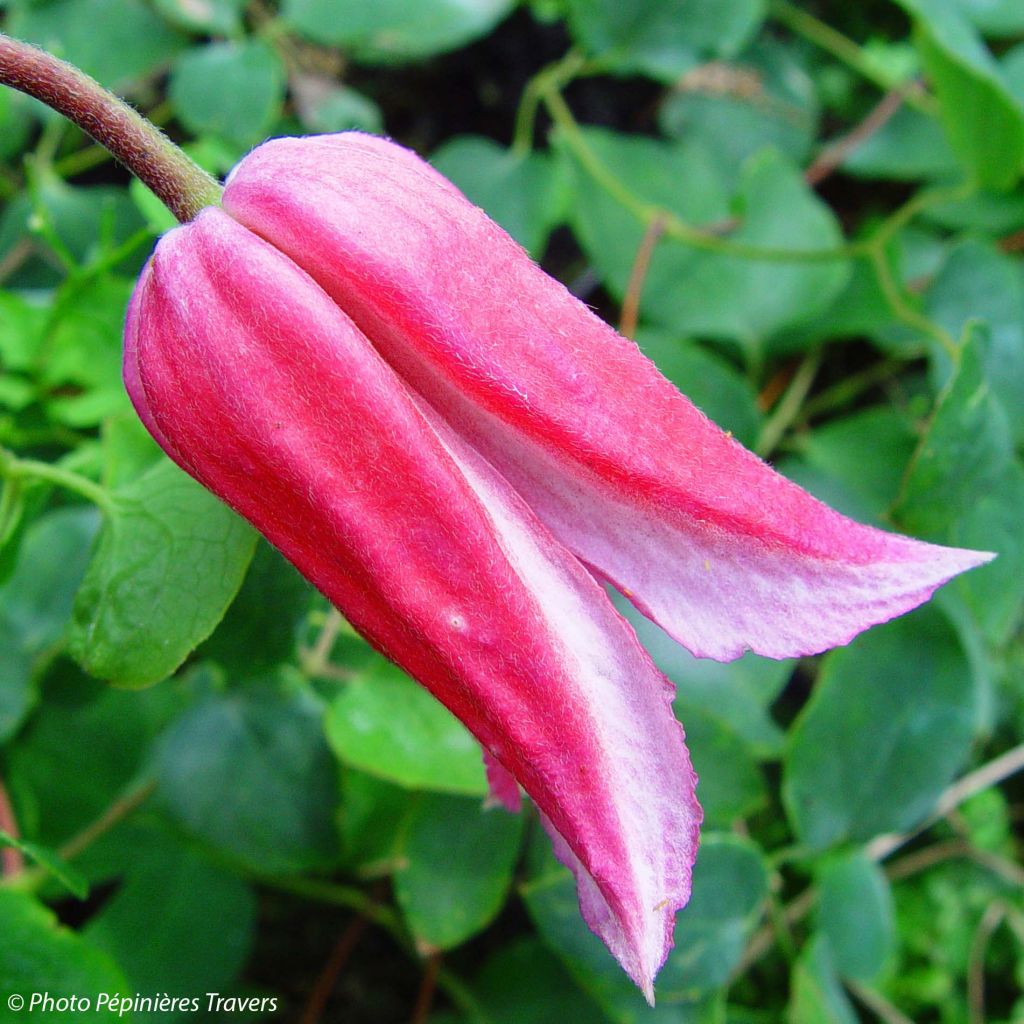

Clematis texensis Queen Maxima - Scarlet Leather Flower
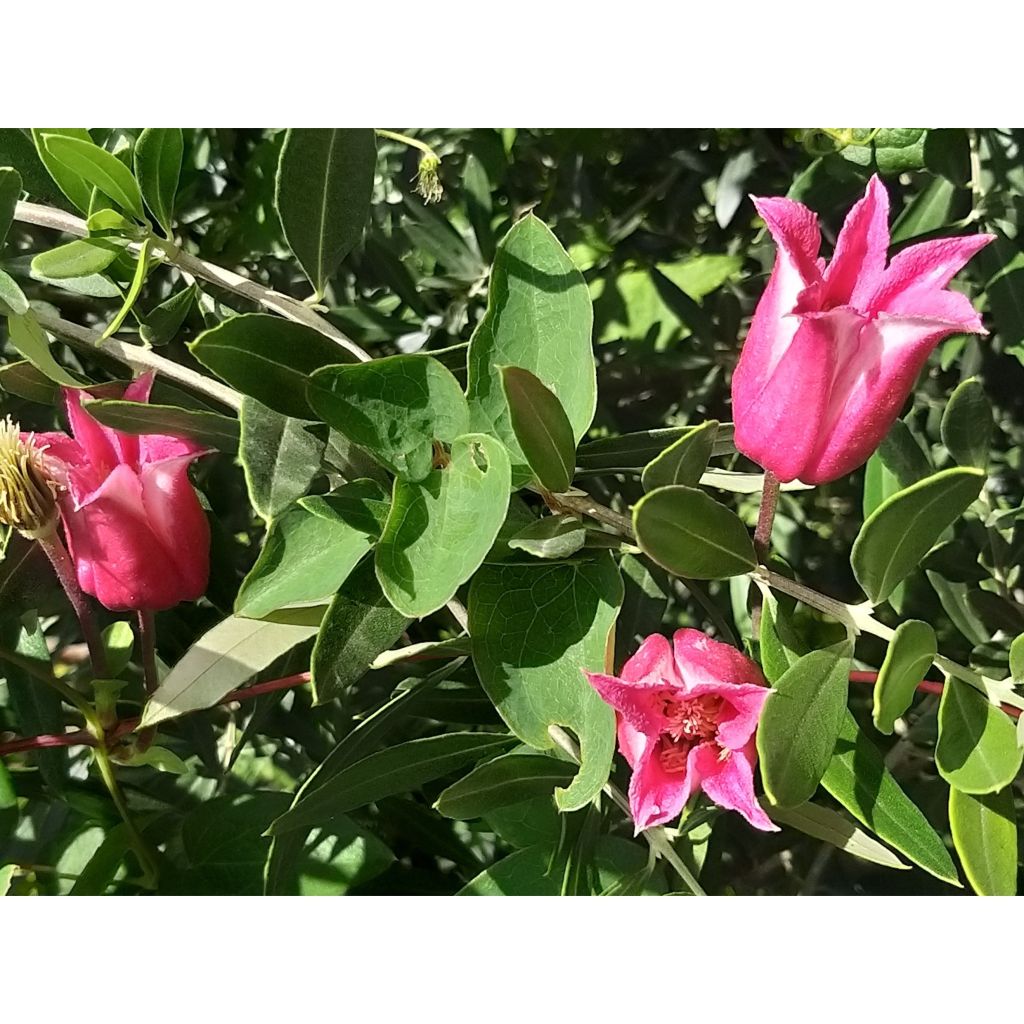

Clematis texensis Queen Maxima - Scarlet Leather Flower


Clematis texensis Queen Maxima - Scarlet Leather Flower
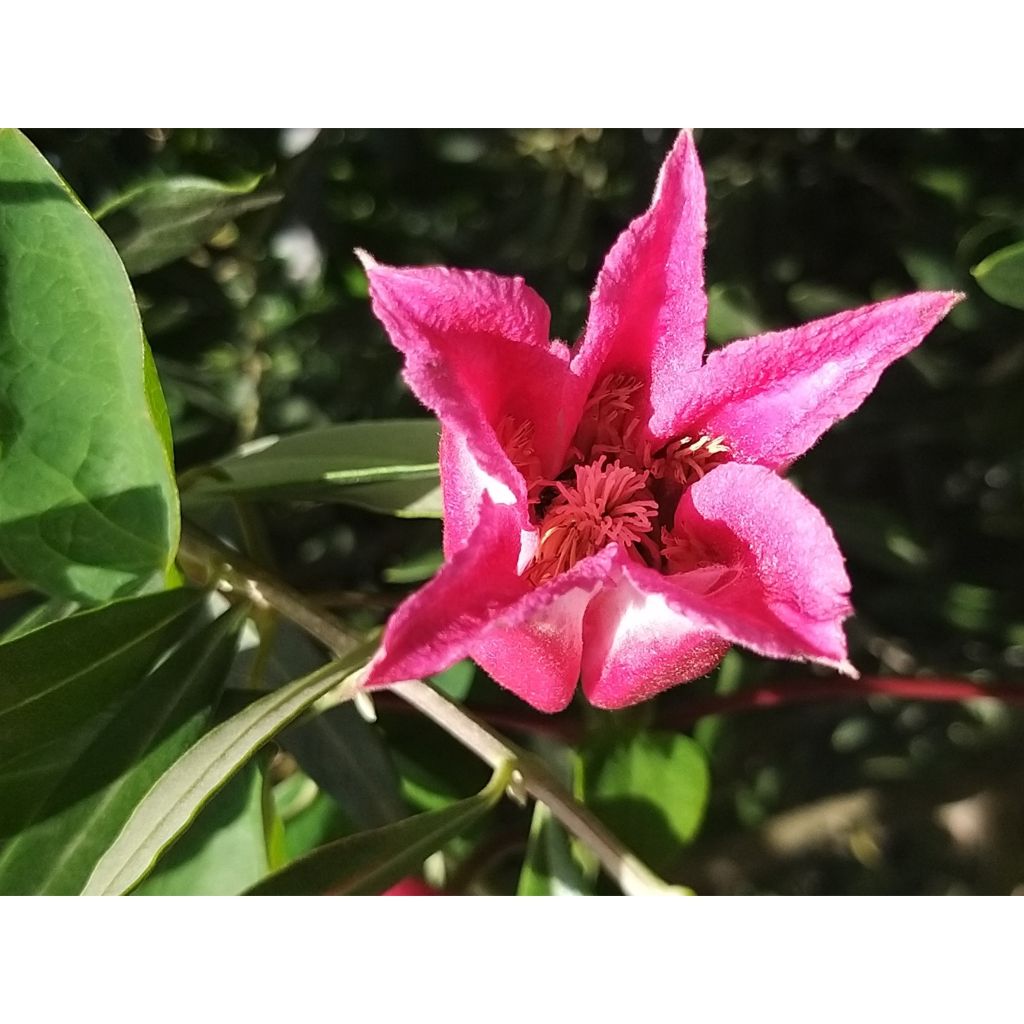

Clematis texensis Queen Maxima - Scarlet Leather Flower
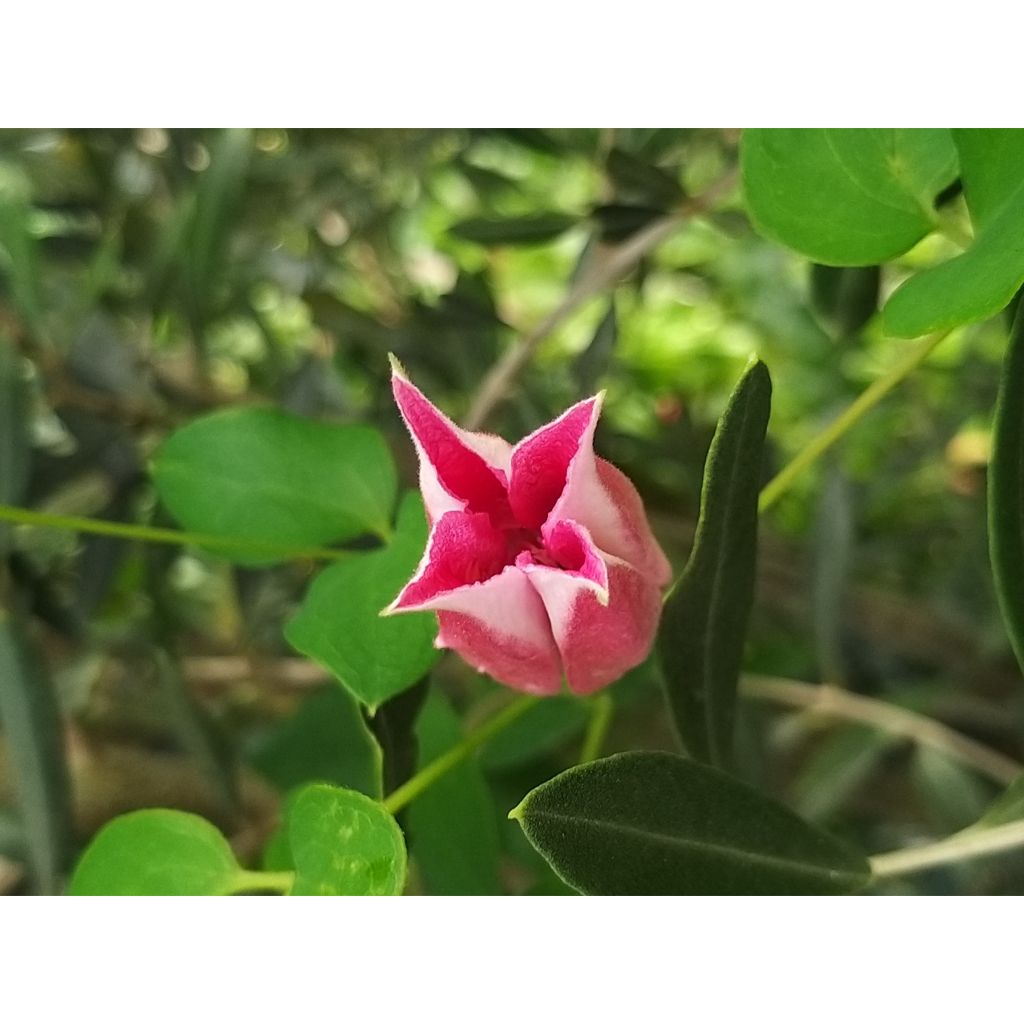

Clematis texensis Queen Maxima - Scarlet Leather Flower
Clematis texensis Queen Maxima - Scarlet Leather Flower
Clematis texensis Queen Maxima
Scarlet Leather Flower, Texas Clematis
This stunning clematis, received and planted with great care and watered properly, deteriorated in record time and completely. I have never seen anything like this before. I can send you a photo of it. I am very disappointed.
Francine, 14/06/2020
Why not try an alternative variety in stock?
View all →This plant carries a 6 months recovery warranty
More information
We guarantee the quality of our plants for a full growing cycle, and will replace at our expense any plant that fails to recover under normal climatic and planting conditions.
From €5.90 for pickup delivery and €6.90 for home delivery
Express home delivery from €8.90.
Does this plant fit my garden?
Set up your Plantfit profile →
Description
The Clematis texensis 'Queen Maxima' is a superb variety of Texas clematis recently obtained in the Netherlands that stands out from its cousins belonging to the same group due to the beautiful size of its flowers. Its flowering takes place in summer, in successive waves, in the form of flowers resembling tulips with fleur-de-lis shapes, from 5 to 9 cm (2 to 4in), of an almost red pink colour, a bright and luminous shade that blends perfectly with late-season flowers. Of modest size, this small herbaceous vine sprouts from the stump every year and only requires a little cleaning in late winter. In the garden, robust and not very susceptible to wilt disease, it crawls and climbs happily on its neighbours. Also, place it in a large pot on the terrace, in a very sunny position in the North, but in partial shade in the South.
The genus Clematis belongs to the ranunculaceae family. 'Queen Maxima' is a very recent Dutch horticultural variety derived from Clematis texensis, a botanical species endemic to the southeast of the Edwards Plateau, Texas. It belongs to clematis that bloom in summer on barely lignified shoots of the year, which then disintegrate in winter. It is a woody-based, creeping and climbing perennial plant that will reach 2m (7ft) in height, with a spread of 1m².
This clematis bears texensis-type flowers, large in size, reaching up to 9 cm (4in) in length, from June to September. They are larger and more brightly coloured than those of the 'Princess Diana' variety. The bisexual flowers are solitary or grouped in clusters. They emerge as small pink buds, barely longer than the tip of the index finger. Then they elongate and open up into bell-shaped flowers with a very narrow neck, with a fairly fleshy texture. They widen as they open, presenting 4 tepals of carmine pink with a darker pink median and lighter margins, wide open in a star shape at maturity, with a bright pink interior plunging towards a cream stamen centre. The flowering is followed by decorative feathery fruits, greyish-silver in colour. The leaves are small, rounded, heart-shaped, and dark green. This clematis clings to the support or host plant through petioles transformed into tendrils.
Plant your clematis in the company of your climbing roses or vines, but also your jasmines, to extend the flowering of your walls and pergolas until the end of summer. It is a genus rich in diversity, with flowers of all colours, shapes, and sizes. Take advantage of their easy cultivation to give your garden a romantic and bohemian touch. Texensis clematis can crawl through your flowerbeds and on low shrubs as they please, they do not require pruning. Their fresh and vibrant bell-shaped flowers accompany the most beautiful flowers of September: the stars of asters, the blue of caryopteris, or the pink of heather (Erica multiflora). 'Queen Maxima', due to its moderate growth, will also thrive in a pot on a balcony or next to an entrance door to welcome visitors with its long-lasting flowering.
Report an error about the product description
Clematis texensis Queen Maxima - Scarlet Leather Flower in pictures
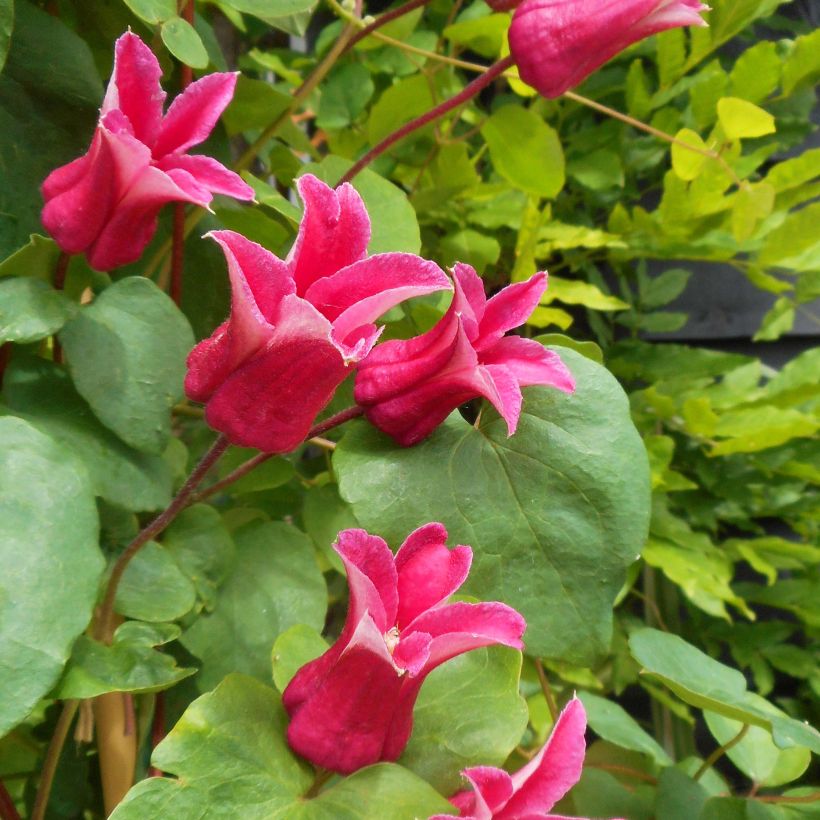

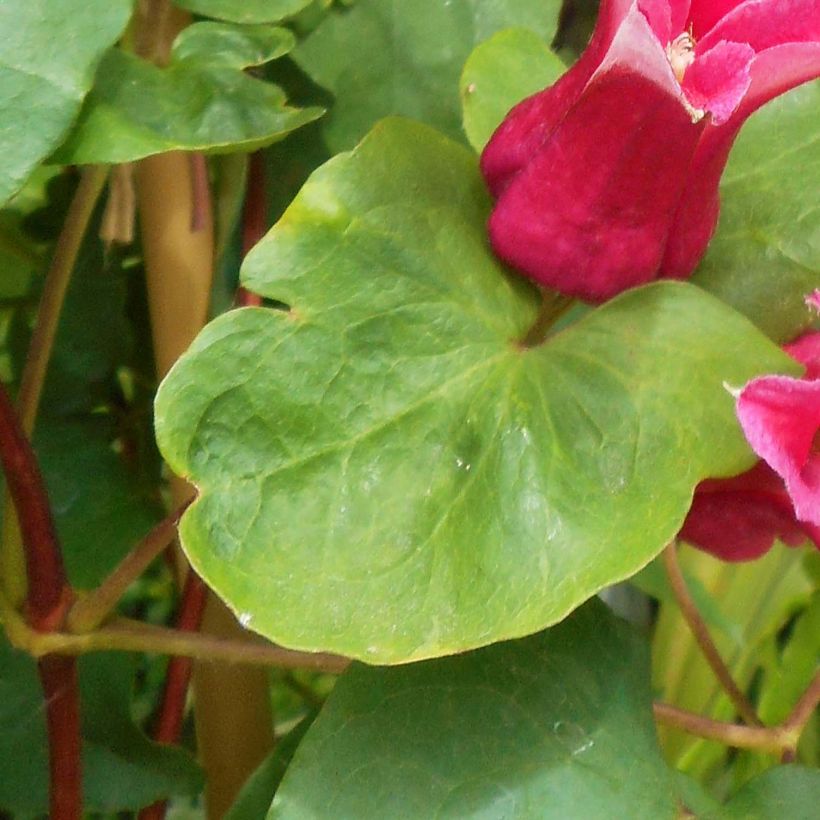

Plant habit
Flowering
Foliage
Botanical data
Clematis
texensis
Queen Maxima
Ranunculaceae
Scarlet Leather Flower, Texas Clematis
Cultivar or hybrid
Other Clematis Texensis
Planting and care
Plant the 'Queen Maxima' clematis preferably in the sun, in fertile, humus-rich, well-drained soil, shading the roots and the base of the stem (with a flat tile for example). Herbaceous species prefer full sun and wilt in overly wet soil. Install your plant by covering the root ball with 3 cm (1in) of soil, in soil worked to a depth of 20 cm (8in), lightened with good compost. During the first few weeks, water regularly but be careful of stagnant water, as it can cause collar rot. Cover the base of climbing clematis with a small mound of soil to reduce the risk of wilting while promoting the emergence of vigorous shoots from the stump. After planting, prune the stems of deciduous climbing clematis to about 30 cm (12in) above a nice pair of buds. Mulch in February with garden compost or well-rotted manure, avoiding direct contact with the stems. Train the stems, without squeezing them, until the plant clings to itself. Clematis also like to grow freely on neighbouring plants. This variety blooms on new growth in summer, so prune it in March to about 20 cm (8in) from the ground (slightly taller on older subjects), cutting cleanly above two large buds. Voles and grey worms can attack clematis and devour the stems. Aphids and greenhouse whiteflies are also potential pests.
Planting period
Intended location
Care
-
, onOrder confirmed
Reply from on Promesse de fleurs
Clematis
Haven't found what you were looking for?
Hardiness is the lowest winter temperature a plant can endure without suffering serious damage or even dying. However, hardiness is affected by location (a sheltered area, such as a patio), protection (winter cover) and soil type (hardiness is improved by well-drained soil).

Photo Sharing Terms & Conditions
In order to encourage gardeners to interact and share their experiences, Promesse de fleurs offers various media enabling content to be uploaded onto its Site - in particular via the ‘Photo sharing’ module.
The User agrees to refrain from:
- Posting any content that is illegal, prejudicial, insulting, racist, inciteful to hatred, revisionist, contrary to public decency, that infringes on privacy or on the privacy rights of third parties, in particular the publicity rights of persons and goods, intellectual property rights, or the right to privacy.
- Submitting content on behalf of a third party;
- Impersonate the identity of a third party and/or publish any personal information about a third party;
In general, the User undertakes to refrain from any unethical behaviour.
All Content (in particular text, comments, files, images, photos, videos, creative works, etc.), which may be subject to property or intellectual property rights, image or other private rights, shall remain the property of the User, subject to the limited rights granted by the terms of the licence granted by Promesse de fleurs as stated below. Users are at liberty to publish or not to publish such Content on the Site, notably via the ‘Photo Sharing’ facility, and accept that this Content shall be made public and freely accessible, notably on the Internet.
Users further acknowledge, undertake to have ,and guarantee that they hold all necessary rights and permissions to publish such material on the Site, in particular with regard to the legislation in force pertaining to any privacy, property, intellectual property, image, or contractual rights, or rights of any other nature. By publishing such Content on the Site, Users acknowledge accepting full liability as publishers of the Content within the meaning of the law, and grant Promesse de fleurs, free of charge, an inclusive, worldwide licence for the said Content for the entire duration of its publication, including all reproduction, representation, up/downloading, displaying, performing, transmission, and storage rights.
Users also grant permission for their name to be linked to the Content and accept that this link may not always be made available.
By engaging in posting material, Users consent to their Content becoming automatically accessible on the Internet, in particular on other sites and/or blogs and/or web pages of the Promesse de fleurs site, including in particular social pages and the Promesse de fleurs catalogue.
Users may secure the removal of entrusted content free of charge by issuing a simple request via our contact form.
The flowering period indicated on our website applies to countries and regions located in USDA zone 8 (France, the United Kingdom, Ireland, the Netherlands, etc.)
It will vary according to where you live:
- In zones 9 to 10 (Italy, Spain, Greece, etc.), flowering will occur about 2 to 4 weeks earlier.
- In zones 6 to 7 (Germany, Poland, Slovenia, and lower mountainous regions), flowering will be delayed by 2 to 3 weeks.
- In zone 5 (Central Europe, Scandinavia), blooming will be delayed by 3 to 5 weeks.
In temperate climates, pruning of spring-flowering shrubs (forsythia, spireas, etc.) should be done just after flowering.
Pruning of summer-flowering shrubs (Indian Lilac, Perovskia, etc.) can be done in winter or spring.
In cold regions as well as with frost-sensitive plants, avoid pruning too early when severe frosts may still occur.
The planting period indicated on our website applies to countries and regions located in USDA zone 8 (France, United Kingdom, Ireland, Netherlands).
It will vary according to where you live:
- In Mediterranean zones (Marseille, Madrid, Milan, etc.), autumn and winter are the best planting periods.
- In continental zones (Strasbourg, Munich, Vienna, etc.), delay planting by 2 to 3 weeks in spring and bring it forward by 2 to 4 weeks in autumn.
- In mountainous regions (the Alps, Pyrenees, Carpathians, etc.), it is best to plant in late spring (May-June) or late summer (August-September).
The harvesting period indicated on our website applies to countries and regions in USDA zone 8 (France, England, Ireland, the Netherlands).
In colder areas (Scandinavia, Poland, Austria...) fruit and vegetable harvests are likely to be delayed by 3-4 weeks.
In warmer areas (Italy, Spain, Greece, etc.), harvesting will probably take place earlier, depending on weather conditions.
The sowing periods indicated on our website apply to countries and regions within USDA Zone 8 (France, UK, Ireland, Netherlands).
In colder areas (Scandinavia, Poland, Austria...), delay any outdoor sowing by 3-4 weeks, or sow under glass.
In warmer climes (Italy, Spain, Greece, etc.), bring outdoor sowing forward by a few weeks.







































